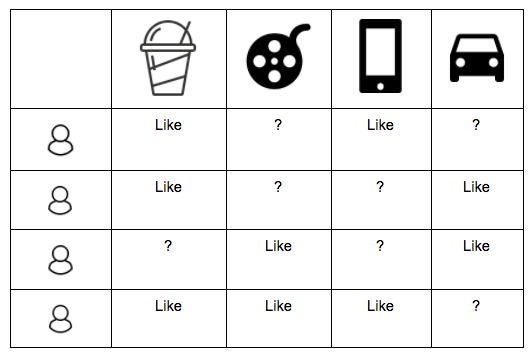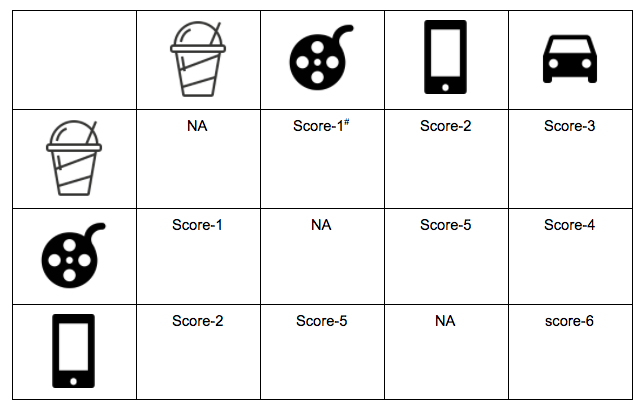Turning Social Media Engagements Into Audience Recommendations
When Affinity Answers gathers intelligence such as “Consumers interested in The Cheesecake Factory are likely to be interested in Jared Jewelry, Andes Mints and CeraVe”, how do we derive these recommendations? Hundreds of global brands rely on Affinity Answers’ recommender system in their programmatic media buying because they trust the intelligence from which it is presented. Powered by AI marketing and through systematic data collection and data science, we turn publicly-expressed social engagements into audience recommendations used in strategy, planning and activation stages of media buying.
Let’s take a deeper look at what happens within the platform of Affinity Answers to power recommendations across 50,000 brands:
Stage 1: Collect the Right Data to Inform Intent
400 million unique users across 45 thousand Facebook pages, Twitter handles and Instagram accounts generate 4 billion engagements (such as likes, comments, replies) every quarter. These publicly available social engagements are at what we refer to as the pre-intent stage of engagement with a brand – when a consumer has expressed interest in a product or service but has not committed to a particular brand. Collecting data that is a representation of the universe of social engagements with consumer and media brands in a statistically significant manner is the primary objective at this stage.
Stage 2: Derive Meaningful Engagements from Social Data
Of all the social engagements collected, filtering the noise to distill meaningful engagements is the first step. The first filter to gather reliable engagements is Active Engagement, which selects only user responses to brand-initiated actions. Responses to brand-initiated actions are observable and are less impulsive, which tend to have greater relevancy for branding at the pre-intent stage. Affinity Answers filters active engagements to gather intelligence and the course of this, we have observed that only around 10% of engagements of the total collected make the cut. What constitutes the 10% that is deemed useful?
- Recency: Affinity towards brands change over time. The recent behaviors are weighted greater than those in the distant past.
- Frequency: Hyper-activeness can be classified as ultra-casual users who give away a social acknowledgment such as a like or a comment without much consideration. On the other side of the spectrum are users with isolated engagement with one entity. While one is a bot, the other one is socially reluctant – both are of no use and are treated as outliers. See here on more about bot behavior that we have observed in our data.
- Intensity: For a post about a new coffee by a Cafe, the comment “The coffee is packaged well but is absolutely useless” has the right subjectivity but a negative polarity. A post to sell one’s old car such as “I have an awesome BMW to sell; meet me at this cafe” – is a comment with positive polarity but poor subjectivity
- Type of Engagement: Differentiating active engagement from the passive ones is like separating the wheat from the chaff. An observable, positive user response to an observable brand-initiated engagement is separated out for treatment. In the case of Facebook, comment on a content post made by the brand is considered active engagement as opposed to a mention of the brand out of context.
Stage 3: Generate Cross-Brand Audience Recommendations
At this stage, we have identified the strongest possible engagement indicators between users and brands. We have observed that on an average, each user expresses positive engagement with 9 brands (out of several thousand). That means, there are plenty of unexpressed interests. Unexpressed interests cannot be treated as dislikes. Mathematically speaking, we have a matrix like the one below, the only difference being that the number of rows runs into the hundreds of millions and the columns into the tens of thousands.

The challenge is to turn a matrix like the one above into actionable intelligence such as the matrix below:

# Score indicates the likelihood of a user with known interests in one brand to exhibit interest in the other
Social users express preferences across a huge set of brands, celebrities, sports, movies, authors and several other items. Based on the expressed interests of a particular user, we have built a recommendation system that generates what else could interest the user. How do we do that? We have built a recommender system which finds similar users and recommends what they liked, like that of Amazon.com or the Netflix Prize fame predicting movie ratings, which is a popular technique known as Collaborative Filtering.
What does the Affinity Answers recommender system do differently?
- Cross-domain recommendations: Derive unprecedented cross-domain recommendations, for instance, audience consumers interested in Game of Thrones can be recommended a particular brand of bread; this can be used to expand the reach beyond the usual suspects of demographics and same-category brand audience.
- Audience prediction: Recommendations to predict an audience interest based on known interests; this can be used to find pre-intent audiences at a scale that can be targeted across any programmatic media.
- Scored recommendation: indicating the likelihood of a user with known interests to exhibit the recommended interest; this can be used to find the act-alike audience that best matches the campaign requirements.
Affinity Answers has mastered harnessing the power of turning the social graph into a scalable and digestible platform that brands and agencies rely on for planning programmatic media buying campaigns. We are constantly innovating the technology and our product suite to make this intelligence accessible to marketers globally and are looking for people that are as passionate about what we’re building to join our product and engineering team. Visit our career page for more information.


